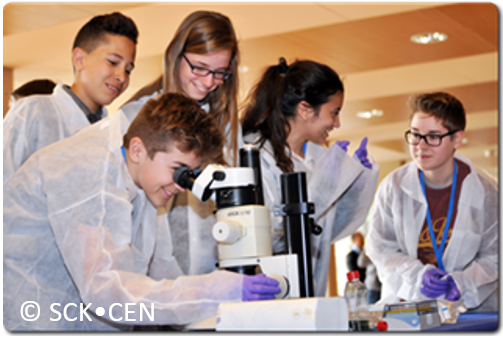Hybrid Polyoxometalates for Applications in Supramolecular Chemistry and Molecular Machines

Category
Ph D Defense
Date
2025-10-08 10:30
Venue
KU Leuven, Arenbergkasteel, Aula Arenbergkasteel, 01.07 - Kasteelpark Arenberg 1
3001 Leuven, België
3001 Leuven, België
Promovendus/a: Givi Kalandia
Promotor(en): Prof. dr. Tatjana Vogt, Prof. dr. Wim Dehaen
Chemistry is the study of molecules. When designing new molecules, chemists are not only interested in creating them but also in understanding how they interact with other molecules. Consider creating a new medication; in such a case, it is essential to know how the medication interacts with biological systems so that it can target the correct biomolecule and benefit the patient. The field of chemistry that studies such intermolecular interactions (interactions occurring between molecules) is known as supramolecular chemistry. Advances in this field have led to the development of better medicines and materials. However, further exploration of these ideas led to the development of molecules that can dynamically change their physical/spatial configuration. This research has culminated in the field of artificial molecular machines, where molecules are specifically designed to achieve controlled motion at the molecular scale. Such motion can be harnessed to control chemical reactivity, materials’ properties, and even biological processes. Although the fields of supramolecular chemistry and molecular machines have found profound development, these systems are primarily based on organic matter. Meaning that they are composed of carbon, nitrogen, and hydrogen. These atoms are fundamental skeletal building blocks for creating molecules, however, for them to have functional properties such as being able to facilitate changes in other molecules, they require a very specific arrangement, which is hard to achieve and can be inefficient.To overcome these limitations, I employ types of molecules that are composed of metals, specifically, Polyoxometalates (POMs). POMs, consist of many metals connected via oxygens (poly - many, oxo - oxygen, metalate - metal connected to something, in this case oxygen). In this work, I have developed new methods to use POMs as components in supramolecular systems and artificial molecular machines. This was achieved by decorating them with organic molecules that would act as “molecular hands” doing different tasks based on their design. In Chapter 2, POMs were decorated with the molecule, which can encapsulate other molecules. This feature was then used to link many POMs together into one material and detoxify harmful chemicals. In Chapter 3, POMs were combined with molecules that enabled precise interactions with a protein, which is a very important achievement for future biotechnology applications. In Chapter 4, multiple POMs were combined in one molecule and, for the first time, a molecule capable of shuttling was incorporated into a POM framework. In Chapters 5 and 6, two different forms of motion at the molecular scale were achieved with POM-based molecules. Namely, rotary motion was promoted using an artificial molecular rotor, and translational motion was achieved by light-induced shape changes of the molecule attached to the POM .
All Dates
- 2025-10-08 10:30
Powered by iCagenda







